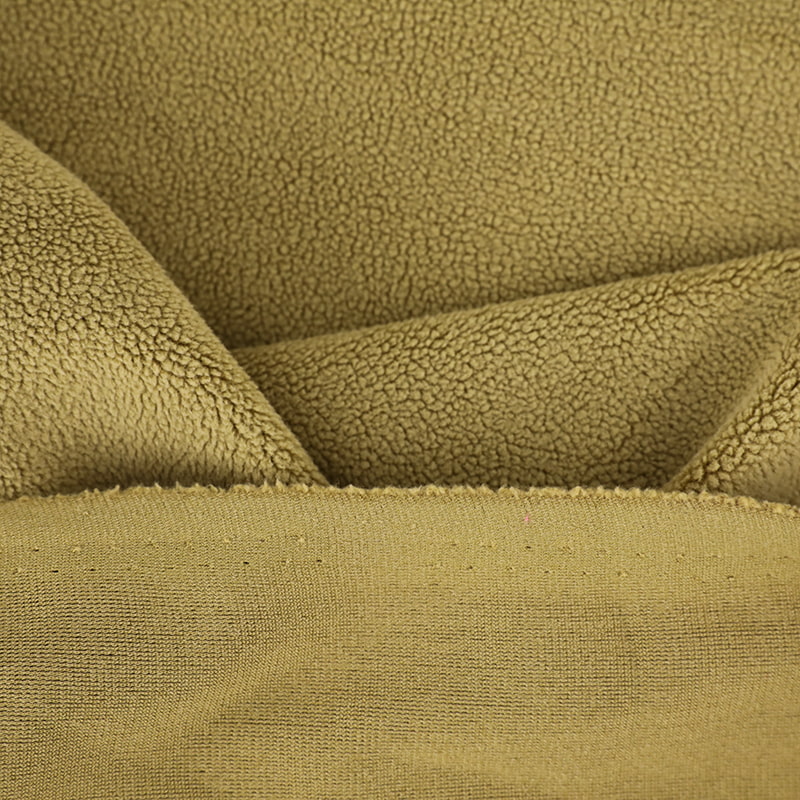What Makes Plush Fleece Fabric a Versatile and Sustainable Choice for Modern Textiles?
Plush fleece fabric, known for its softness, warmth, and durability, has become a staple in the textile industry. From cozy blankets and winter apparel to pet bedding and upholstery, its applications are vast and varied. This article delves into the composition, manufacturing process, and unique properties of plush fleece fabric, while exploring its environmental impact and the innovations driving its future in sustainable textiles.
1. The Science Behind Plush Fleece: Composition and Structure
Plush fleece is a synthetic fabric typically made from polyester, though some blends incorporate natural fibers like cotton or wool. Its signature softness and warmth stem from its unique structure:
Pile fibers: The fabric is woven with long, dense fibers that create a plush, velvety surface.
Brushing process: After weaving, the fabric undergoes mechanical brushing to raise the fibers, enhancing softness and creating air pockets that trap heat.
Knit or woven base: The base layer provides structural integrity, while the raised fibers offer insulation and texture.
Polyester fleece is particularly popular due to its lightweight, moisture-wicking, and quick-drying properties. Advanced variations, such as microfleece, use ultra-fine fibers for even greater softness and breathability.
2. Manufacturing Process: From Polymer to Plush
The production of plush fleece involves several stages:
Polymer extrusion: Polyester pellets are melted and extruded into fine filaments.
Spinning and weaving: Filaments are spun into yarn and knitted or woven into fabric.
Brushing and shearing: Mechanical brushes raise the fibers, and precision shearing ensures uniform pile height.
Finishing: Treatments like anti-pilling, flame retardancy, or water repellency are applied to enhance performance.
Recycled polyester, derived from post-consumer plastic bottles, is increasingly used to produce eco-friendly fleece, reducing reliance on virgin petroleum-based materials.
3. Key Properties: Why Plush Fleece Stands Out
Softness: The brushed surface provides a luxurious feel, making it ideal for comfort-oriented products.
Warmth: Air pockets within the pile trap body heat, offering excellent insulation without added weight.
Durability: Polyester’s strength ensures resistance to wear, tearing, and shrinking.
Moisture management: Wicks moisture away from the skin, keeping users dry and comfortable.
Easy care: Machine washable and quick-drying, requiring minimal maintenance.
4. Applications: From Fashion to Home and Beyond
Plush fleece’s versatility makes it a favorite across industries:
Apparel: Jackets, hoodies, scarves, and gloves for cold-weather wear.
Home textiles: Blankets, throws, and bedding for added warmth and comfort.
Pet products: Cozy beds, toys, and apparel for pets.
Upholstery: Soft, durable covers for furniture and automotive interiors.
Outdoor gear: Linings for sleeping bags, tents, and camping gear.

5. Sustainability: Addressing Environmental Concerns
While polyester fleece offers numerous benefits, its environmental impact has drawn criticism:
Microfiber pollution: Washing synthetic fleece releases microplastics into waterways. Innovations like Guppyfriend washing bags and integrated filtration systems aim to mitigate this issue.
Recycled materials: Brands like Patagonia and Polartec use recycled polyester to reduce plastic waste and carbon emissions.
Biodegradable alternatives: Research into bio-based polymers (e.g., PLA) and natural fiber blends seeks to create eco-friendly fleece options.
6. Innovations in Plush Fleece Technology
Antimicrobial treatments: Silver-ion or copper-infused fibers inhibit bacterial growth, ideal for activewear and medical textiles.
Thermoregulation: Phase-change materials (PCMs) embedded in fleece adapt to body temperature, enhancing comfort.
Smart textiles: Conductive fibers enable integration with wearable technology for heating or health monitoring.
Waterless dyeing: Supercritical CO₂ dyeing reduces water usage and chemical waste in fleece production.
7. The Future of Plush Fleece: Trends and Opportunities
As consumer demand for sustainable and functional textiles grows, plush fleece is evolving to meet new challenges:
Circular economy: Closed-loop recycling systems transform old fleece products into new fabrics.
Customization: Digital printing allows for personalized patterns and colors without excess dye waste.
Hybrid fabrics: Combining fleece with natural fibers or biodegradable synthetics enhances performance and sustainability.

Huzhou Colorful Textile Co., Ltd.
Huzhou Colorful Textile Co., Ltd. is located in Zhili Town High-tech Industrial Park, China's children's wear city. The main production and sales of plush warp-knitted products: for children's clothing spandex super soft and ollie velvet products, compared with the market has obvious cost performance. Due to the reduction of layers of intermediate links, completely control the price advantage. The company has superior geographical location, strict internal management, stable quality (with export orders of professional technical team), hot pillow service, the preferred supplier for garment enterprises cooperation.
More About Us

 English
English русский
русский Español
Español عربى
عربى







